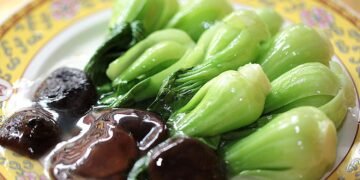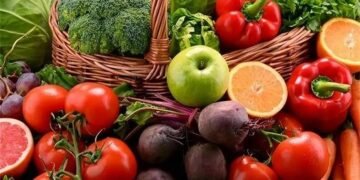The Plastic Paradox
Plastic is one of humanity’s most significant inventions, cherished for its durability, versatility, and affordability. Yet today, it stands as a major pollutant in our environment—an irony of its very durability. No matter how finely plastic is shredded, its chemical structure remains intact, contributing to the pervasive issue of microplastic contamination. These tiny fragments are now found in the depths of our oceans, atop Mount Everest, and even within the human body, from the brain to the male reproductive organs. The quest for safe, environmentally friendly, and low-cost methods to recover and degrade plastic has become a pressing environmental challenge.
Microbes that Consume Plastics
In a unique initiative, the U.S. Defense Advanced Research Projects Agency (DARPA) issued a call for projects to develop a compact device capable of converting waste plastics into not only ammunition and lubricating oils but even food and drink. Given that plastics, composed of carbon, hydrogen, and oxygen, share these fundamental components with sugars and fats, why not explore the possibility of transforming them? The requirement was for such a device to be fully integrated, minimalist in size, and low in power consumption, allowing for transport in vehicles and minimizing logistical burdens.
Innovating Solutions at Michigan Technological University
A team led by microbiologist Stephen Techtmann at Michigan Technological University accepted this intriguing challenge. Techtmann noted, “Theoretically, it’s feasible, but initially, it felt more like science fiction than something achievable.” For years, scientists have been experimenting with various bacteria that can digest plastic. One notable discovery in 2001 involved a species found in landfills known to feed on plastic. However, transforming these bacteria into a viable product capable of breaking down plastics—and subsequently converting that plastic into food for human consumption—has proven to be a formidable task. Techtmann clarified, “Our aim is not to create food from plastic, but rather to cultivate bacteria that consume plastics and are, in themselves, safe for human consumption.”
Creating the Plastic-Degrading Machine
The research team ultimately constructed a functional plastic-degradation machine. In this innovative device, plastics undergo initial shredding before being submerged in ammonia. Certain plastics like PET (polyethylene terephthalate), commonly used in water bottles, can be effectively broken down during this process. Conversely, more robust plastics such as polyethylene (PE) and polypropylene (PP), found in military food packaging, are redirected to a separate, high-temperature anaerobic reactor, where they are converted into fuel and lubricants. Chemical engineer David Shonnard, part of this team, has since founded a company aimed at commercializing this groundbreaking technology.
After being treated with ammonia, PET decomposes into a complex mixture akin to the byproducts of plant decomposition, allowing composting bacteria to thrive on these new nutrients. These bacteria, originally accustomed to consuming plant waste, can extract energy from plastic remnants. Once ingested by these microorganisms, the plastic is dried and processed into a powder teeming with fats, carbohydrates, and proteins. The resulting powder carries a scent reminiscent of yeast.
Assessing Safety for Human Consumption
Despite these advancements, the prospect of humans consuming microbial powders raises safety concerns. Currently, only a handful of microbes—such as certain lactic acid bacteria, Bacillus, and yeast—are deemed safe for human intake, none of which can degrade plastic. To ensure the edibility of their microbial product, the research team conducted initial toxicology screenings, comparing the components of their mixtures against known toxins and finding no apparent harmful substances.

Further studies involved feeding the microbial powder to parasitic nematodes, with so far no adverse effects reported. Joshua Pearce, an electrical engineer from Western University in Canada, expressed confidence in the safety of the product, stating, “We are very certain that there are no harmful substances present.” Moving forward, the team intends to study the long-term effects of this microbial powder on rats. If results are positive, they plan to submit their findings for evaluation by the U.S. Food and Drug Administration (FDA).
Public Perception and Practical Applications
Techtmann acknowledges a potential negative perception regarding the consumption of plastic-eating microbes, despite scientific validation of their safety. However, the team never aimed for widespread distribution of this product. They envision its primary usage in military settings or during disaster relief operations—essentially, as a last resort in extreme situations. “If a bite could allow me to survive a few more days, I wouldn’t mind overcoming the ick factor,” he quipped.
Emerging Enterprises in Edible Microbes
Beyond the Michigan Technological University, several companies are exploring the production of edible microbes. Solar Foods, a Finnish company, aims to utilize natural bacteria to produce a mustard-colored powder predominantly rich in protein. They have established a factory that utilizes water, electricity, and carbon dioxide from the atmosphere to create edible protein. Their product has already been approved in Singapore, with applications pending in the EU, UK, and the U.S., with hopes of launching by the end of the year.
Culinary Innovations for a Sustainable Future
In terms of gourmet culinary advancements, researchers at the University of California, Berkeley, have taken a pioneering approach to high-quality food production. Vayu Hill-Maini, a former chef turned chemist, collaborates with Michelin-starred chefs to craft food from fungi. Utilizing grains and legumes, particularly those seen as kitchen waste—such as byproducts from oat milk production—Hill-Maini states, “In the U.S., about one-third of food is wasted—not just kitchen scraps, but also in large-scale industrial manufacturing.”
Drawing inspiration from Indonesia’s traditional staple, oncom—which is made from leftover soy and cassava along with fibrous plant materials—Hill-Maini and his team have been transforming these food residues into digestible and protein-rich delicacies using Neurospora. He has even installed a fermentation chamber in his restaurant to cultivate this fungal staple and published findings on this bioconversion process in Nature Microbiology.
The gourmet team prioritizes the taste and quality of their creations, ensuring that the resulting dishes are not merely emergency rations but enjoyable culinary experiences. Hill-Maini describes the flavor profile as subtle and earthy, contrasting with the pungency of blue cheese. Fungi grown on rice husks, apple pomace, and soybean residues each present unique flavors, culminating in delightful dishes—including desserts featuring the fungus—served in their Michelin restaurant.
Cultural Acceptance of Innovative Foods
Inspired by a time-honored culinary tradition—proven by generations—this innovative food not only appears more palatable than the notion of consuming plastic-degrading microbes, but also is poised to redefine sustainability in the food industry.











































